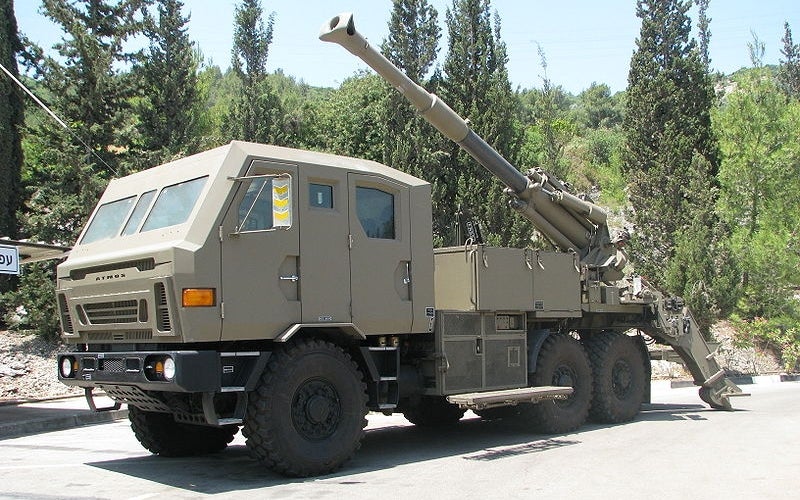
Kryl 155mm lightweight, truck-mounted, self-propelled howitzer system, designed by Polish heavy industry manufacturer Huta Stalowa Wola (HSW), was unveiled at the MSPO 2014 International Defence Industry Exhibition in Kielce, Poland.
The howitzer is intended to destroy air defence missiles, missile systems, command posts, armoured and mechanised units, artillery batteries, communication posts and field fortifications, and other support and supply objects.
The Kryl project is being funded by The National Centre for Research and Development (NCBR), Poland. The weapon system participated in the Land Forces Day held in Rzeszów in September 2015, as well as in the MSPO 2015 exhibition.
The first prototype underwent a series of trials in the first half of 2015. Military and factory qualification tests will be performed in 2016 and the weapon system is expected to enter serial production for the Polish Army in 2017.
Kryl 155mm self-propelled howitzer details
The Kryl self-propelled howitzer is mounted on a Jelcz 663.32 6×6 military truck, manufactured by Polish company Jelcz. It is based on the Atmos 2000 artillery system, developed by Israeli defence firm Elbit Systems, and is armed with a 52cal-long barrel.
The weapon can hold up to 18 rounds of ammunition in the stowage box and has a rate of fire of six rounds a minute. It can fire at an elevation angle from -2° to 70°, whereas the angle of fire for azimuth is 50°. It has a minimum range of 5km and is capable of hitting targets at ranges up to 40km.
The howitzer delivers an intensive rate of fire of six rounds a minute and a sustained rate of fire of two rounds a minute. It can fire three rounds a minute in the salvo (MRSI) mode. The Kryl can be put into action in less than a minute and taken out of action in a similar period.
Fire control system
The fire control system consists of a ballistic computer, a gun system computer, and displays for commander and aimer.
Navigation for the weapon is provided by a TALIN 5000 inertial navigation system (INS). The onboard digital radio-station and FONET intercom provide communication for the crewmen, while an MVRS 700 SCD muzzle velocity radar is used for the measurement of muzzle velocity.
Jelcz 663.32 military truck design, propulsion and performance
The Jelcz 663.32 truck is 10.3m-long, 2.55m-wide and 3.44m-high, and accommodates five crew members. It is air transportable by C-130 military transport aircraft, has a combat weight of 21,000kg and weighs approximately 19,000kg in air-transportable mode.
The truck features an armoured cabin equipped with a two-piece flat bullet-proof windshield and a door with a small ballistic glass on either side for cabin access.
An in-line, supercharged, six-cylinder MTU 6R106TD21 diesel engine, mounted in front portion, powers the truck. It generates a maximum power of 240kW at 2,200rpm and a maximum torque of 1,300Nm at 1,200rpm-1,600rpm.
The engine is designed to meet EURO III standard and is coupled with a mechanical transmission system that has nine gears. A liquid cooling system with expansion tank controls the engine’s operating temperature.
The Jelcz 663.32 can attain a speed of 90km/h on surfaced roads and a usable ground speed of 20km/h. The truck can negotiate trenches of 0.6m, climb grades up to 20°, and ford at 0.7m without preparation. It has a cruising range of 500km.
The Global Armoured Vehicles and Counter-IED Vehicles Market 2011-2021
This project forms part of our recent analysis and forecasts of the global armoured vehicles and counter-IED vehicles market available from our business information platform Strategic Defence Intelligence. For more information click here or contact us: EMEA: +44 20 7936 6783; Americas: +1 415 439 4914; Asia Pacific: +61 2 9947 9709 or via email.






